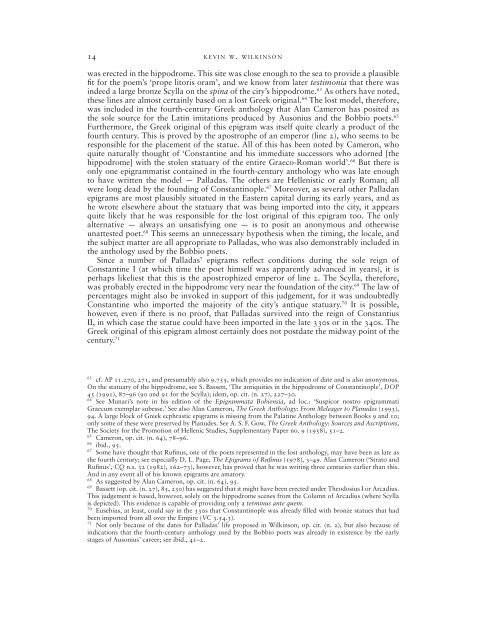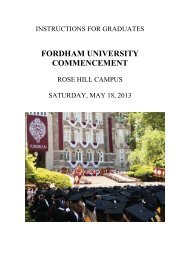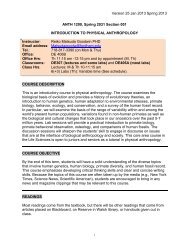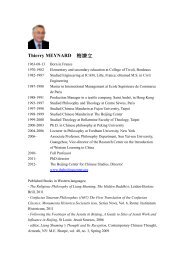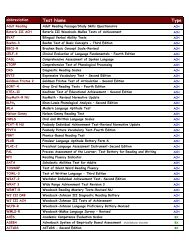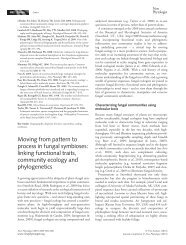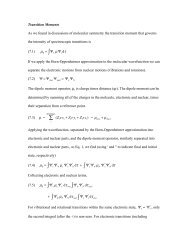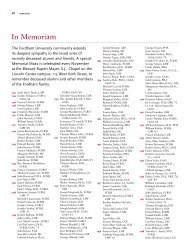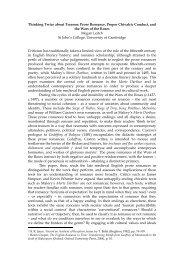Palladas and the Foundation of Constantinople - Fordham University
Palladas and the Foundation of Constantinople - Fordham University
Palladas and the Foundation of Constantinople - Fordham University
Create successful ePaper yourself
Turn your PDF publications into a flip-book with our unique Google optimized e-Paper software.
14 K E V I N W. WILKINSON<br />
was erected in <strong>the</strong> hippodrome. This site was close enough to <strong>the</strong> sea to provide a plausible<br />
fi t for <strong>the</strong> poem’s ‘prope litoris oram’, <strong>and</strong> we know from later testimonia that <strong>the</strong>re was<br />
indeed a large bronze Scylla on <strong>the</strong> spina <strong>of</strong> <strong>the</strong> city’s hippodrome. 63 As o<strong>the</strong>rs have noted,<br />
<strong>the</strong>se lines are almost certainly based on a lost Greek original. 64 The lost model, <strong>the</strong>refore,<br />
was included in <strong>the</strong> fourth-century Greek anthology that Alan Cameron has posited as<br />
<strong>the</strong> sole source for <strong>the</strong> Latin imitations produced by Ausonius <strong>and</strong> <strong>the</strong> Bobbio poets. 65<br />
Fur<strong>the</strong>rmore, <strong>the</strong> Greek original <strong>of</strong> this epigram was itself quite clearly a product <strong>of</strong> <strong>the</strong><br />
fourth century. This is proved by <strong>the</strong> apostrophe <strong>of</strong> an emperor (line 2), who seems to be<br />
responsible for <strong>the</strong> placement <strong>of</strong> <strong>the</strong> statue. All <strong>of</strong> this has been noted by Cameron, who<br />
quite naturally thought <strong>of</strong> ‘Constantine <strong>and</strong> his immediate successors who adorned [<strong>the</strong><br />
hippodrome] with <strong>the</strong> stolen statuary <strong>of</strong> <strong>the</strong> entire Graeco-Roman world’. 66 But <strong>the</strong>re is<br />
only one epigrammatist contained in <strong>the</strong> fourth-century anthology who was late enough<br />
to have written <strong>the</strong> model — <strong>Palladas</strong>. The o<strong>the</strong>rs are Hellenistic or early Roman; all<br />
were long dead by <strong>the</strong> founding <strong>of</strong> <strong>Constantinople</strong>. 67 Moreover, as several o<strong>the</strong>r Palladan<br />
epigrams are most plausibly situated in <strong>the</strong> Eastern capital during its early years, <strong>and</strong> as<br />
he wrote elsewhere about <strong>the</strong> statuary that was being imported into <strong>the</strong> city, it appears<br />
quite likely that he was responsible for <strong>the</strong> lost original <strong>of</strong> this epigram too. The only<br />
alternative — always an unsatisfying one — is to posit an anonymous <strong>and</strong> o<strong>the</strong>rwise<br />
unattested poet. 68 This seems an unnecessary hypo<strong>the</strong>sis when <strong>the</strong> timing, <strong>the</strong> locale, <strong>and</strong><br />
<strong>the</strong> subject matter are all appropriate to <strong>Palladas</strong>, who was also demonstrably included in<br />
<strong>the</strong> anthology used by <strong>the</strong> Bobbio poets.<br />
Since a number <strong>of</strong> <strong>Palladas</strong>’ epigrams refl ect conditions during <strong>the</strong> sole reign <strong>of</strong><br />
Constantine I (at which time <strong>the</strong> poet himself was apparently advanced in years), it is<br />
perhaps likeliest that this is <strong>the</strong> apostrophized emperor <strong>of</strong> line 2. The Scylla, <strong>the</strong>refore,<br />
was probably erected in <strong>the</strong> hippodrome very near <strong>the</strong> foundation <strong>of</strong> <strong>the</strong> city. 69 The law <strong>of</strong><br />
percentages might also be invoked in support <strong>of</strong> this judgement, for it was undoubtedly<br />
Constantine who imported <strong>the</strong> majority <strong>of</strong> <strong>the</strong> city’s antique statuary. 70 It is possible,<br />
however, even if <strong>the</strong>re is no pro<strong>of</strong>, that <strong>Palladas</strong> survived into <strong>the</strong> reign <strong>of</strong> Constantius<br />
II, in which case <strong>the</strong> statue could have been imported in <strong>the</strong> late 330s or in <strong>the</strong> 340s. The<br />
Greek original <strong>of</strong> this epigram almost certainly does not postdate <strong>the</strong> midway point <strong>of</strong> <strong>the</strong><br />
century. 71<br />
63 cf. AP 11.270, 271, <strong>and</strong> presumably also 9.755, which provides no indication <strong>of</strong> date <strong>and</strong> is also anonymous.<br />
On <strong>the</strong> statuary <strong>of</strong> <strong>the</strong> hippodrome, see S. Bassett, ‘The antiquities in <strong>the</strong> hippodrome <strong>of</strong> <strong>Constantinople</strong>’, DOP<br />
45 (1991), 87–96 (90 <strong>and</strong> 91 for <strong>the</strong> Scylla); idem, op. cit. (n. 27), 227–30.<br />
64 See Munari’s note in his edition <strong>of</strong> <strong>the</strong> Epigrammata Bobiensia, ad loc.: ‘Suspicor nostro epigrammati<br />
Graecum exemplar subesse.’ See also Alan Cameron, The Greek Anthology: From Meleager to Planudes (1993),<br />
94. A large block <strong>of</strong> Greek ecphrastic epigrams is missing from <strong>the</strong> Palatine Anthology between Books 9 <strong>and</strong> 10;<br />
only some <strong>of</strong> <strong>the</strong>se were preserved by Planudes. See A. S. F. Gow, The Greek Anthology: Sources <strong>and</strong> Ascriptions,<br />
The Society for <strong>the</strong> Promotion <strong>of</strong> Hellenic Studies, Supplementary Paper no. 9 (1958), 51–2.<br />
65 Cameron, op. cit. (n. 64), 78–96.<br />
66 ibid., 95.<br />
67 Some have thought that Rufi nus, one <strong>of</strong> <strong>the</strong> poets represented in <strong>the</strong> lost anthology, may have been as late as<br />
<strong>the</strong> fourth century; see especially D. L. Page, The Epigrams <strong>of</strong> Rufi nus (1978), 3–49. Alan Cameron (‘Strato <strong>and</strong><br />
Rufi nus’, CQ n.s. 32 (1982), 162–73), however, has proved that he was writing three centuries earlier than this.<br />
And in any event all <strong>of</strong> his known epigrams are amatory.<br />
68 As suggested by Alan Cameron, op. cit. (n. 64), 95.<br />
69 Bassett (op. cit. (n. 27), 85, 230) has suggested that it might have been erected under Theodosius I or Arcadius.<br />
This judgement is based, however, solely on <strong>the</strong> hippodrome scenes from <strong>the</strong> Column <strong>of</strong> Arcadius (where Scylla<br />
is depicted). This evidence is capable <strong>of</strong> providing only a terminus ante quem.<br />
70 Eusebius, at least, could say in <strong>the</strong> 330s that <strong>Constantinople</strong> was already fi lled with bronze statues that had<br />
been imported from all over <strong>the</strong> Empire (VC 3.54.3).<br />
71 Not only because <strong>of</strong> <strong>the</strong> dates for <strong>Palladas</strong>’ life proposed in Wilkinson, op. cit. (n. 2), but also because <strong>of</strong><br />
indications that <strong>the</strong> fourth-century anthology used by <strong>the</strong> Bobbio poets was already in existence by <strong>the</strong> early<br />
stages <strong>of</strong> Ausonius’ career; see ibid., 41–2.


